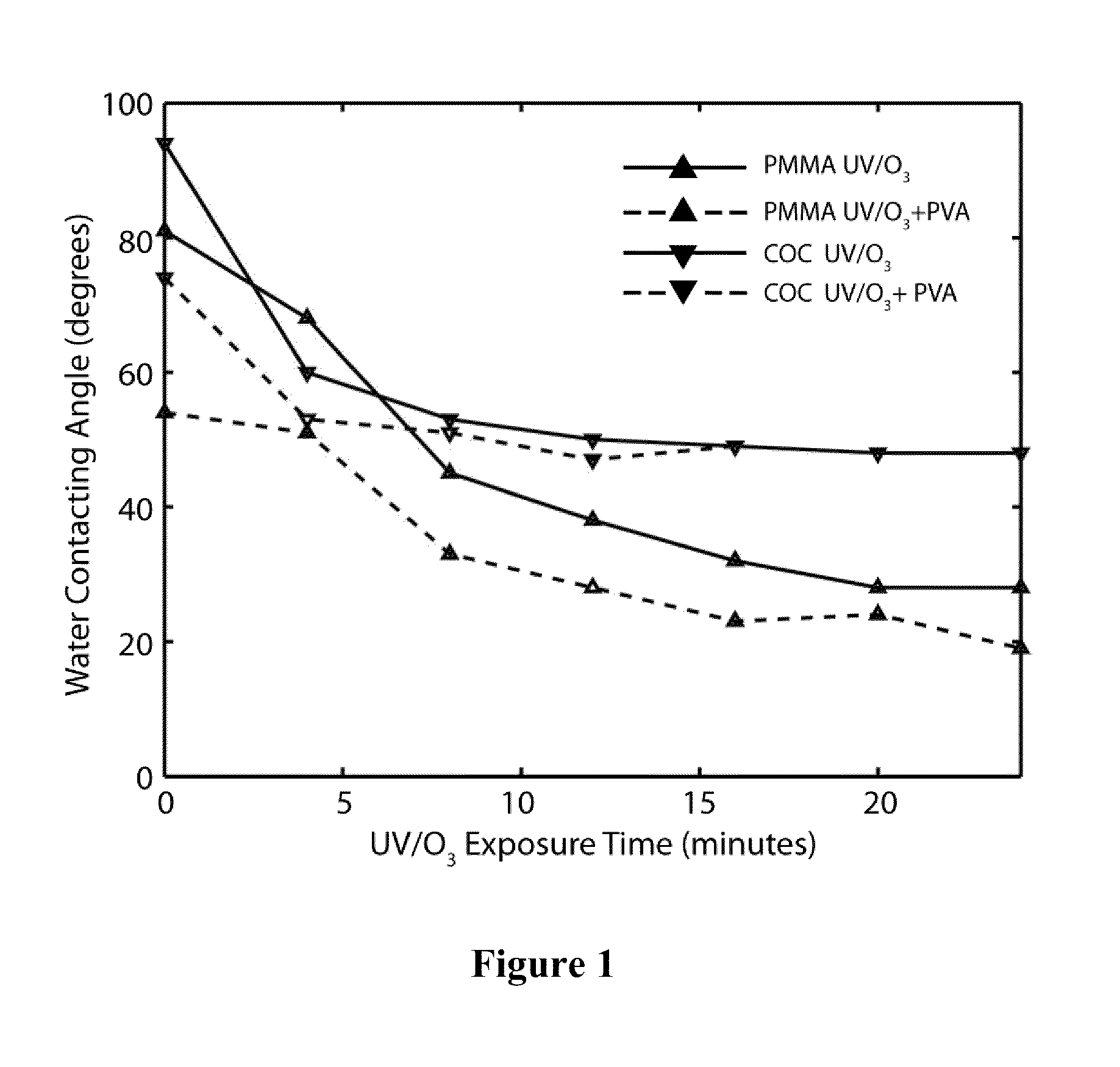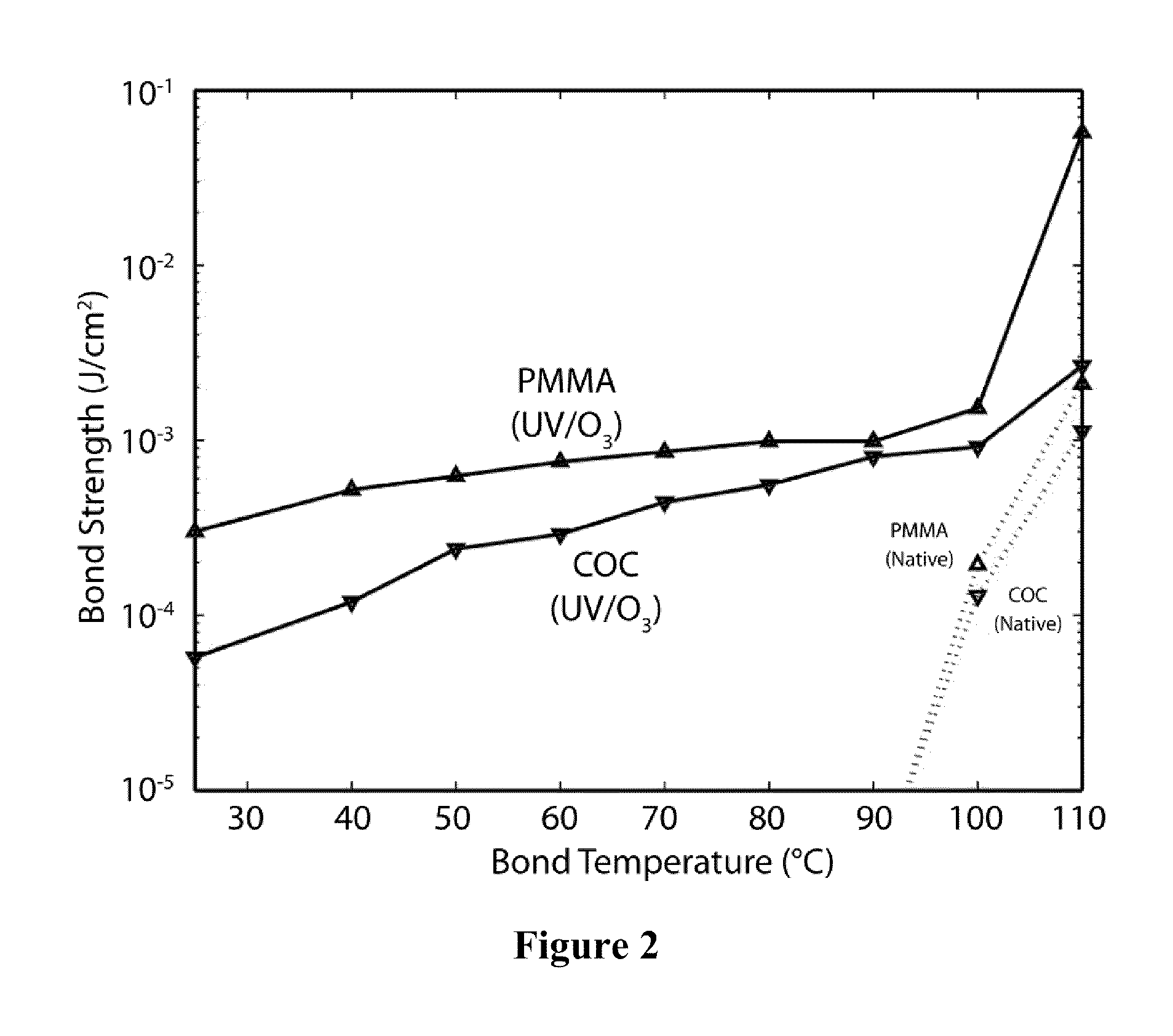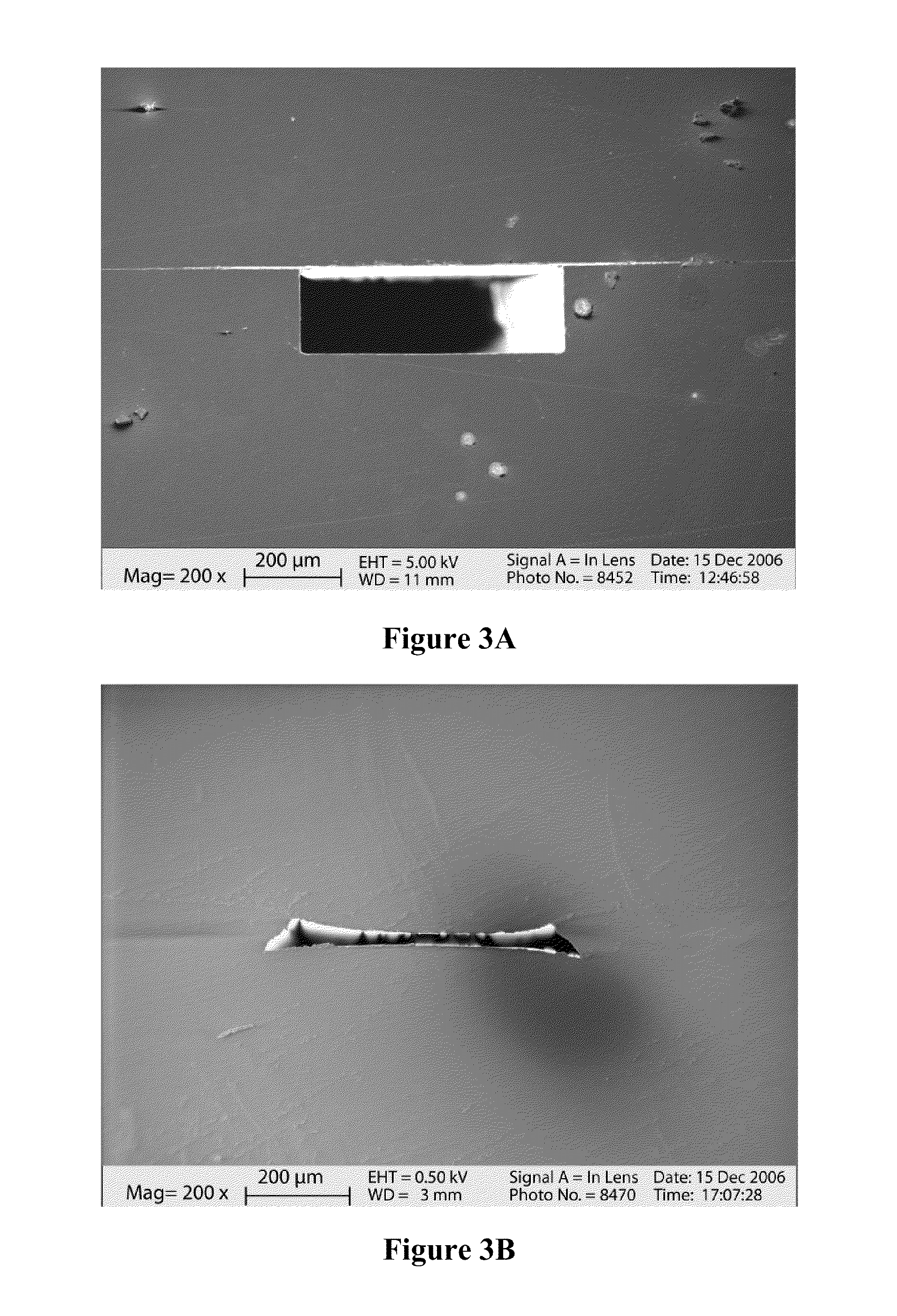Low temperature polymer bonding using UV/ozone surface treatment
a technology of uv/ozone surface treatment and polymer bonding, which is applied in the direction of group 3/13 element organic compounds, nuclear engineering, chemical/physical/physicochemical processes, etc., can solve the problems of thermal bonding suffering, solvent bonding suffering from dimensional stability problems, and low bond strength, etc., to achieve high bond strength, low cost, and high throughput
- Summary
- Abstract
- Description
- Claims
- Application Information
AI Technical Summary
Benefits of technology
Problems solved by technology
Method used
Image
Examples
example 1
[0060]Chip Preparation and bonding. Microfluidic substrates were prepared from 2.0 mm thick COC (Zeonor 1020 R®, Zeon Chemicals L. P., Louisville, Ky. was employed in this and the following examples to exemplify the use of cyclic olefin copolymer in accordance with the present invention) and 1.6 mm thick PMMA (Optix® Acrylic Sheet, Plaskolite Inc., Columbus, Ohio was employed in this and the following examples to exemplify the use of poly-(methyl methacrylate) compositions in accordance with the present invention). The thickness of the COC plates was reduced from 2 mm to 1.6 mm by placing a 1.6 mm gauge block between two optically smooth glass plates in a commercial hot press (AutoFour / 15, Carver, Wabash, Ind.), with the platen heated to 120° C. at a pressure of 6.9 MPa for 1 hour. Goniometer measurements performed on COC substrates before and after thickness reduction revealed no statistically meaningful change in contact angle resulting from this process.
[0061]UV / O3 exposure was p...
example 2
[0066]The application of UV / O3 surface treatments for low temperature bonding of PMMA and COC substrates was evaluated. In general, it is observed that UV / O3 treated surfaces enable moderate bond strengths even at room temperature, and at higher temperatures produce bond strengths which rival native polymers bonded above their respective glass transition temperatures. Despite the potential benefits of UV / O3 treatment for low temperature microfluidic substrate bonding, UV / O3 exposure affects surface chemistry and can potentially alter the performance of microfluidic systems. To address this issue, surface stability and electroosmotic flow performance were also considered.
[0067]Contact Angle. The maximum bond strength which may be realized between two mating surfaces is a function of surface wettability. Surface contact angles were evaluated as a function of UV / O3 exposure prior to performing direct bond strength measurements. Average goniometer measurements reported here were perform...
PUM
| Property | Measurement | Unit |
|---|---|---|
| temperature | aaaaa | aaaaa |
| temperature | aaaaa | aaaaa |
| pH | aaaaa | aaaaa |
Abstract
Description
Claims
Application Information
 Login to View More
Login to View More - R&D
- Intellectual Property
- Life Sciences
- Materials
- Tech Scout
- Unparalleled Data Quality
- Higher Quality Content
- 60% Fewer Hallucinations
Browse by: Latest US Patents, China's latest patents, Technical Efficacy Thesaurus, Application Domain, Technology Topic, Popular Technical Reports.
© 2025 PatSnap. All rights reserved.Legal|Privacy policy|Modern Slavery Act Transparency Statement|Sitemap|About US| Contact US: help@patsnap.com



